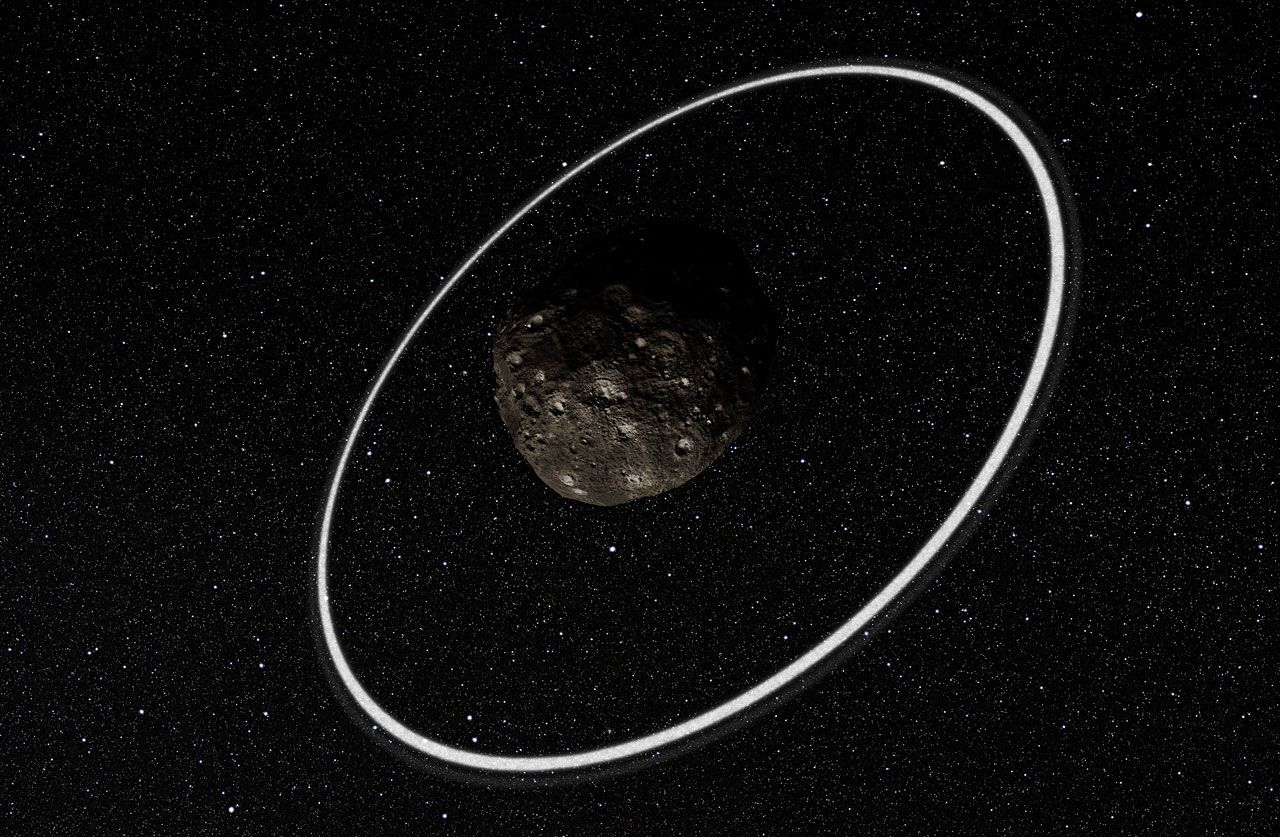A Tiny Hidden Satellite Could Shape These "Impossible Rings"
Follow us on Google News (click on ☆)

Chariklo and its two narrow rings, seen in this artist's impression.
Credit: ESO/L. Calçada/M. Kornmesser/Nick Risinger (skysurvey.org)
Chariklo, the largest known Centaur with a diameter of about 155 miles (250 kilometers), astounded the scientific community in 2013 when a stellar occultation revealed the existence of two narrow rings surrounding it. This discovery marked a turning point in our understanding of the minor bodies of the solar system, highlighting that rings are not exclusive to the gas giants.
The rings of Chariklo, located approximately 243 and 252 miles (391 and 405 kilometers) from its center, defy expectations. Unlike the rings of giant planets – maintained by their immense gravity – those of Chariklo, according to computer models, should disperse rapidly. However, their persistence suggests the influence of a shepherd satellite, a small celestial body that, through its presence, shapes and maintains the narrow structure of the rings.
This hypothetical satellite, roughly 1.9 miles (3 kilometers) in diameter, would be too small to be directly observed from Earth. Nevertheless, its existence could be inferred during stellar occultations, events where Chariklo passes in front of a star and briefly blocks its light. The concept of shepherd satellites is not new and plays a recognized role in the dynamics of the rings of gas giants, like Saturn. These cosmic guardians regulate the distribution of particles in the rings, preventing their dispersion and promoting cohesion.
The composition of Chariklo's rings, mainly comprised of water ice particles, bears a resemblance to the rings of the gas giants. This similarity heightens the scientific interest in these structures and raises questions about their origin, evolution, and the exact nature of the physical interactions at play.
The discovery of such rings around a Centaur like Chariklo expands our understanding of the complexity and diversity of celestial phenomena in our solar system. It shines a light on the dynamic mechanisms that can exist even around small celestial bodies, challenging our expectations and enriching our knowledge.